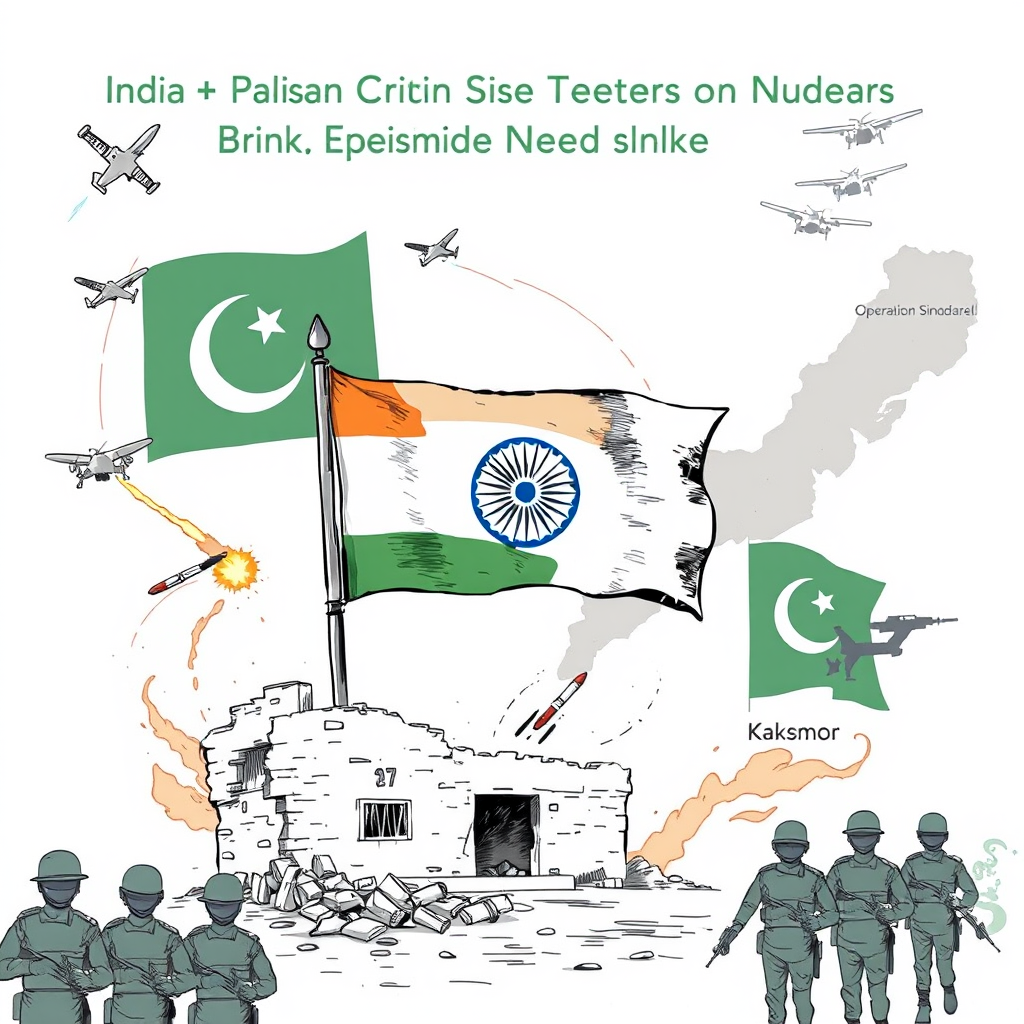India Pakistan Crisis Teeters on Nuclear Brink

The Indian National Flag is visible near a structure destroyed by Pakistani shelling along the Line of Control in Uri, Jammu, and Kashmir, India, on May 9, 2025. | Nasir Kachroo/NurPhoto via Getty Images. The latest violent confrontation between India and Pakistan appears to be escalating, despite both nations having a history of managing such crises without triggering a full-blown nuclear war. When announcing the cross-border missile strikes that initiated what India dubs “Operation Sindoor,” Indian Foreign Secretary Vikram Misri described the actions as “measured, non-escalatory, proportionate, and responsible.” Neither side has yet deployed ground troops across the border, which would signal a more significant conflict.
On Wednesday, India launched missile attacks into Pakistan in retaliation for a brutal April massacre of tourists, which Indian authorities allege was orchestrated by militants with ties to the Pakistani state. Since then, both countries have exchanged artillery and drone strikes, resulting in approximately four dozen deaths. This escalation has led some analysts to compare the current situation to the Kargil War of 1999, the deadliest conflict between the two nations since they acquired nuclear weapons.
Despite both countries’ reluctance to let the crisis escalate, the potential for a larger conflict remains. Since India and Pakistan were partitioned in 1947, they have engaged in four major wars and numerous smaller skirmishes, primarily over the disputed region of Kashmir. The introduction of nuclear weapons in the 1970s and 1990s has added a layer of complexity to their conflicts, leading to the concept of the ‘stability-instability paradox,’ where nuclear weapons deter large-scale war but encourage smaller-scale violence.
Over the years, India and Pakistan have had several close calls, such as the 2001 and 2008 terrorist attacks in India that prompted military buildups but ultimately did not lead to war. In 2016 and 2019, India responded to militant attacks with surgical strikes and airstrikes, respectively, both of which escalated tensions but did not result in a full-blown conflict.
The current crisis began on April 22 when gunmen targeted Hindu men in Pahalgam, a tourist resort in Indian-administered Kashmir, killing 26 people. A militant group, the Resistance Front, claimed responsibility, but India alleges it is a front for Lashkar-e-Taiba, a group with ties to Pakistani security services. Pakistan denies any involvement. After weeks of rising tensions, India launched missile strikes into Pakistan, targeting alleged terrorist sites. Pakistan responded with its own drone and missile strikes, and the situation continues to deteriorate.
Finding a way to de-escalate the conflict is crucial. In the past, gestures like the release of a captured pilot or renegotiating water treaties have helped diffuse tensions. However, the current climate of misinformation and nationalist fervor makes dialogue challenging. The United States, traditionally a mediator in India-Pakistan crises, finds its role complicated by shifting alliances and deteriorating relations with Pakistan.
The risk of nuclear escalation looms large. India and Pakistan possess around 180 and 170 nuclear warheads, respectively. Pakistan’s lack of a ’no first use’ policy and its development of tactical nuclear weapons add to the volatility. While both sides have shown restraint so far, the potential for a miscalculation or an unintended escalation remains high.
In my opinion, the international community must urge both nations to exercise restraint and engage in diplomatic efforts to prevent further escalation. The people of Kashmir, already suffering from decades of conflict and human rights abuses, should not bear the brunt of this crisis. It is imperative that India and Pakistan find a way to resolve their differences peacefully, lest they risk a catastrophic nuclear exchange that would have global repercussions.